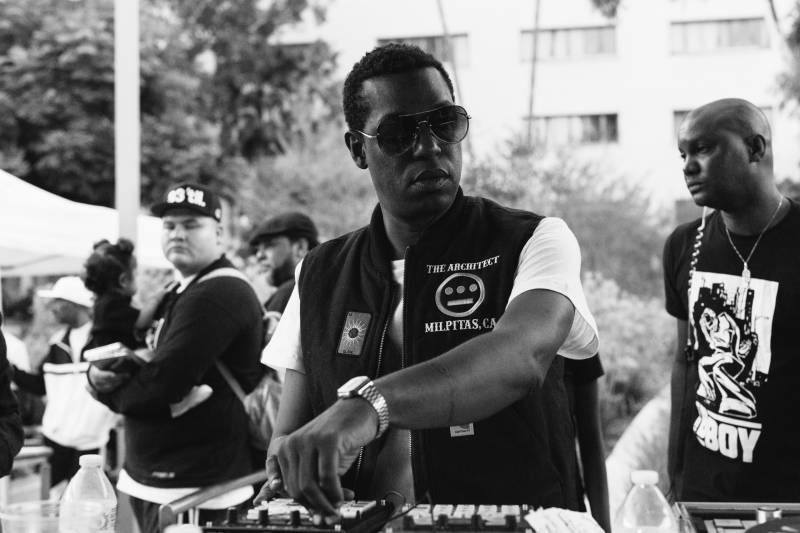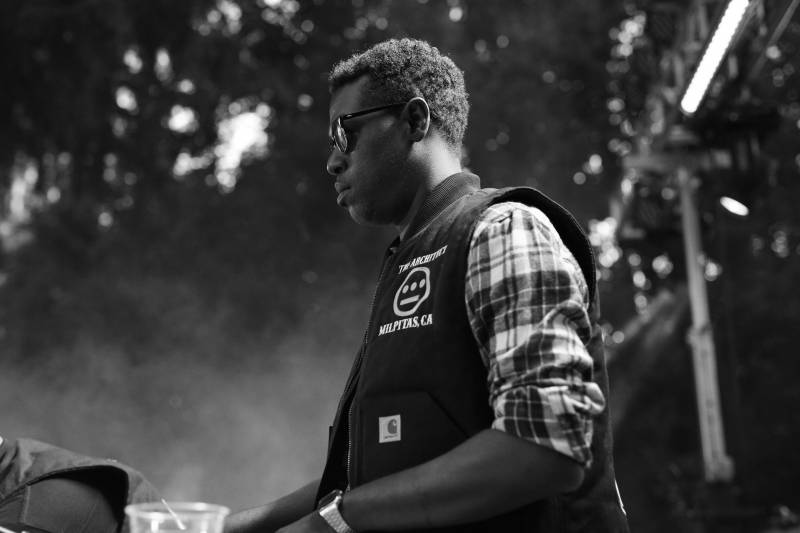“I love the technology of now,” says Gary “The Architect” Herd as he bounces around a bank of computers and studio equipment. Fellow music producer The Big Head Scientist rolls a blunt on a couch nearby. The modest East Oakland room is a home away from home—Herd travels here regularly from Stockton, where he lives with his family.
“Older heads are used to a format, y’know, some type of label, some type of [A&R] there to organize it and make it all work,” Herd reflects. “But these days don’t work like that. You gotta love this shit to really do it. Facts.”
Herd’s catalog dates to the early ’90s, when he and Everett “Grand the Visitor” Aknowledge formed Homeliss Derilex in Milpitas. Decades later, he’s still hustling beats. Vinyl copies of recent albums by cult stars like Tha God Fahim, Planet Asia and Mach-Hommy—nearly all self-released by the artists—decorate the studio walls. Each bears The Architect’s signature sound: a blend of cryptic, dreamlike sampled loops, sometimes augmented by keyboards and other live instruments that he plays himself. He calls it “the new golden era,” a nod to how the sound evokes a hallowed period before the deaths of 2Pac and the Notorious B.I.G. The irony is that now, in his middle age, The Architect is arguably better known than ever.
“The weird thing about Homeliss Derilex is that…I didn’t walk down the street and reap the benefits of what [we] did,” says Herd. Since the duo was mostly studio-bound, their appeal was largely confined to local scenesters. They didn’t play many concerts or tour to build a larger audience. Highlights of their sporadic output include a 1996 12-inch single for then-rising San Jose label Stones Throw Records, “Cash Money,” and a 2004 CD, Raise It Up.
Subsequent projects like Herd’s collaborations with San Jose rapper Shaya “Encore” Bekele, particularly Encore’s highly underrated 2000 album Self-Preservation, only drew modest attention. By the end of the aughts, Herd began to withdraw from the music scene. “Napster was happening, all the streaming, everything was in disarray,” he says. “Records aren’t being pressed. Labels are going under. It was too much.”





